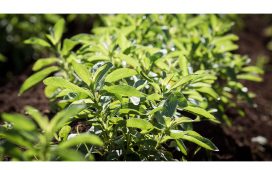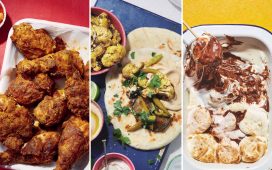From her home in Cayey, P.R., the chef Natalia Vallejo speaks with measured sadness about shutting down Cocina al Fondo, her intimate farm-to-table restaurant in San Juan. But the closing amid this particular crisis feels different than if there had been a storm.
After a hurricane, people typically gather, forming a rebulú — a spontaneous, noisy all-nighter that spills out into the streets, with a big pot of sancocho stew simmering on the stove. Imagine Luis Fonsi and Daddy Yankee’s video for the song “Despacito,” but without electricity, and with the swirling smell of plantains.
“Family and friends would come together, each one contributing what they could,” Ms. Vallejo said. “We shared, we laughed, we cried. Almost every day I cooked and ate with friends or family — we would light the grill and listen to music.”
Instead, she has remained at home, separated from her family.
To live and eat in Puerto Rico means being prepared for disruption, particularly between June and November — hurricane season, which now appears to be worsening as a result of climate change.
In major storms, residents may lose electricity and phone service, effectively cutting off communication from the outside world, as well as access to drinking water and fresh food. The earliest storm on record was Hurricane San Roque in 1508, but dozens have swept the island since. It’s not a question of whether the hurricane will come, but when.
A pandemic is different. Many on the island have said that Covid-19 is worse than even Hurricane Maria, which devastated Puerto Rico in 2017, because the virus has exposed longstanding inequities and prevented the kind of in-person community response that follows a storm.
Puerto Rico, which has the highest poverty rate in the nation, has been hit hard by the coronavirus. As of Oct. 23, there have been 60,984 Covid-19 cases and 791 resulting deaths. Travel restrictions have complicated life on an island that relies heavily on tourism. Unemployment has skyrocketed, and so has food insecurity as demand for assistance falls short of available government funds.
But even amid food insecurity, and with limited ingredients, Puerto Ricans cook in ways that are soul-nourishing and emphasize flavor. Making magic out of food scraps is the way they’ve always cooked — an expression of ancestry, adaptability and fortitude.
Take mofongo. Plantains, which were brought to the Caribbean from Africa to feed enslaved workers, are deep-fried, blended with Spanish ingredients like garlic, olive oil and pork cracklings, then mashed in a large wooden pilón, a mortar and pestle with Indigenous Taíno roots. Plantains grow in abundance across Puerto Rico, and can be harvested from the ground after a storm. Mofongo is intensely flavorful and satisfying, and remains one of the most popular dishes on the island.
Then there’s arroz con pollo: rice and chicken, the island’s ultimate comfort food. A dish that does a lot with very little, it starts with chicken sautéed in sofrito, a blend of garlic, onions, peppers and recao or culantro, an earthy cousin of cilantro that thrives on the island. The chicken is then cooked in stock with rice — also brought to the island by the Spanish and cultivated by enslaved African and Indigenous workers — along with whatever other ingredients are on hand. This is one of many one-pot, slow-cooked rice dishes that develop incredible flavor from layering ingredients.
Arroz con pollo is also one of the dishes that the Spanish chef José Andrés served in Hurricane Maria’s wake. The chef, who famously served nearly four million meals on the island alongside thousands of volunteers, leaned on locals to inform what foods were prepared.
The decision to serve arroz con pollo was practical, Mr. Andrés said: It’s a local dish, and the ingredients were available. It was also a comfort to those eating it. Flavor can’t fix a crisis, but good food can nourish the body for whatever lies ahead.
“To me, a meal served after a disaster is not just about the calories or the nutrients, or where the ingredients come from,” he said. “It is about giving a sense of dignity and hope for the future.”
Those meals are also about ingenuity and resourcefulness. After Maria, the Nuyorican chef César Pérez, who’s traveled back and forth to the island since childhood, called his friend Kelly Pirro, the chef at Mai Pen Rai, a Thai restaurant in San Juan, to see what they could do.
“She didn’t have that much. Some chicken, some coconut milk,” said Mr. Pérez. “And she’s like, ‘OK, I’ll make a chicken coconut curry.’ She had black beans, and I was like, ‘OK, I’ll make an arroz guisado’” — stewed, seasoned rice.
“There wasn’t much, but it was delicious,” he said. “And we just packed up the calderos” — the pots — “in the back of her van, and we drove to Loíza. We stopped on the side of the road, and we just opened the trunk. And there was a point that there was a line of people.”
Over the next seven months, Ms. Pirro and some collaborators distributed home-cooked meals across the island, ultimately forming a nonprofit group called Serve PR. When the coronavirus arrived, they fed hospitality workers, who have been particularly hard hit as the roller coaster of shifting restrictions — including a law that prohibited alcohol sales after 7 p.m. — has forced many bars and restaurants to close.
Ms. Pirro grew up in the Midwest and is of Korean descent; while Mai Pen Rai’s Thai cuisine has its own bold flavors, her cooking has become more Boricua.
“I do a lot of stewing, a lot of guisos,” she said, using the local term for a braising sauce. “And I really love sofrito. Onions and peppers and aromatics like cilantro — it’s amazing how you can use basic humble ingredients to make food that just really shines.”
For decades, hurricane recovery has led Puerto Rican cooks to rely on imported nonperishable goods even more than they already do — a legacy of U.S. policy. Local crops lost to storms only intensify the problem.
Despite the island’s biodiversity, an estimated 85 percent of the food in Puerto Rico is imported. The Merchant Marine Act of 1920, commonly known as the Jones Act, stipulates that all imported goods must be delivered on ships owned and operated by the United States, which limits the island’s trade capacity and drives up food prices. In 1947, Operation Bootstrap industrialized the island, leading to an abrupt shift from agricultural production to manufacturing.
But as much as those policies have had a negative impact on Puerto Rican agriculture, a few of the canned foods associated with them, like canned corned beef, Vienna sausages and Spam, are beloved by many on the island and have been absorbed by the cuisine.
Crispy fried Spam has a hamlike smokiness and a pleasing texture. Islanders have long incorporated this ingredient into everyday dishes: Spam with eggs, Spam sandwiches, Spam with rice or Spam guisado with tomatoes, olives and potatoes. Following Maria, Spam macaroni and cheese emerged as a popular favorite — both instant ingredients were included in some food-assistance boxes — as did Spam-stuffed mofongo.
Still, Tara Rodríguez Besosa, one of the founders of El Departamento de la Comida, who uses gender-neutral pronouns, wants to support alternatives. The organization, which is dedicated to Puerto Rican food sovereignty, plans to work with local farmers to make sauces, pickles and other shelf staples, using ingredients from the farms. “You know, the opposite of Goya,” Mx. Rodríguez Besosa said.
Soon after Covid-19 struck, the organization also distributed free local heirloom seeds across the island and started loaning out farm equipment, like plows and wood chippers.
It’s a different kind of resourcefulness and resilience, a forward-looking approach that supports local farms while feeding the community.






